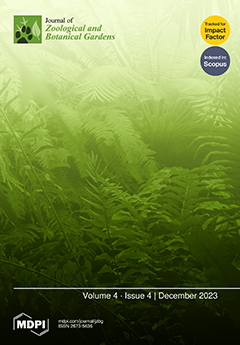J. Zool. Bot. Gard., Volume 4, Issue 4 (December 2023) – 11 articles
JZBG is an international, multidisciplinary, peer-reviewed, open access and open source scientific journal that encompasses the intersection of fauna and flora conservation. It publishes reviews, original research papers, short communications and opinion papers, without word length limits.
It draws together experts from multiple disciplines (i.e., biology, conservation, veterinary science, geography, limnology, ecology, geology, paleology, archaeology, arboriculture, anthropology, history, social sciences and humanities) to explore pure and applied research questions concerning the management, conservation and sustainability of biodiversity (i.e., plants, animals, fungi, protozoa, viruses and bacteria) and human/nature heritage issues
- Issues are regarded as officially published after their release is announced to the table of contents alert mailing list.
- You may sign up for e-mail alerts to receive table of contents of newly released issues.
- PDF is the official format for papers published in both, html and pdf forms. To view the papers in pdf format, click on the "PDF Full-text" link, and use the free Adobe Reader to open them.





